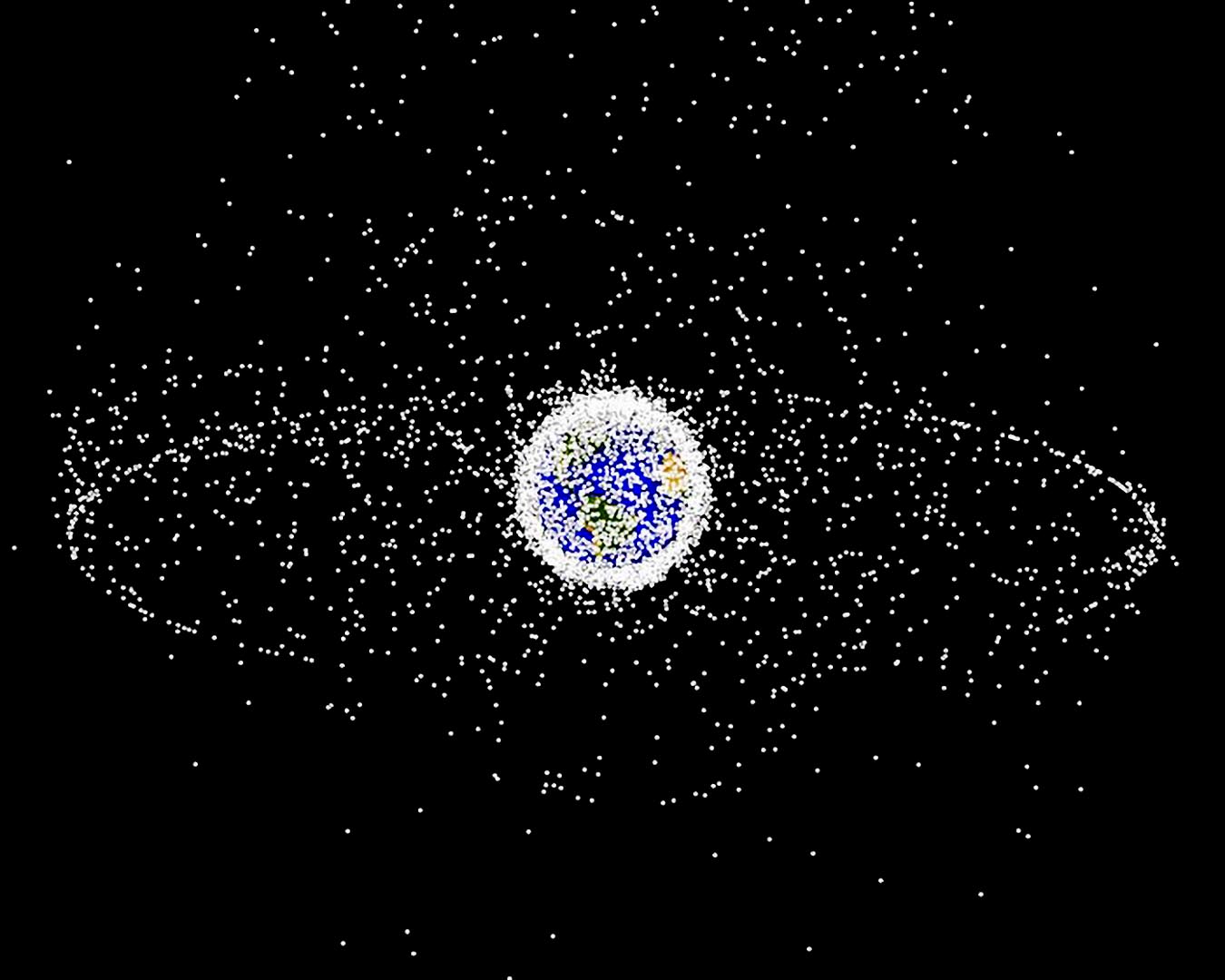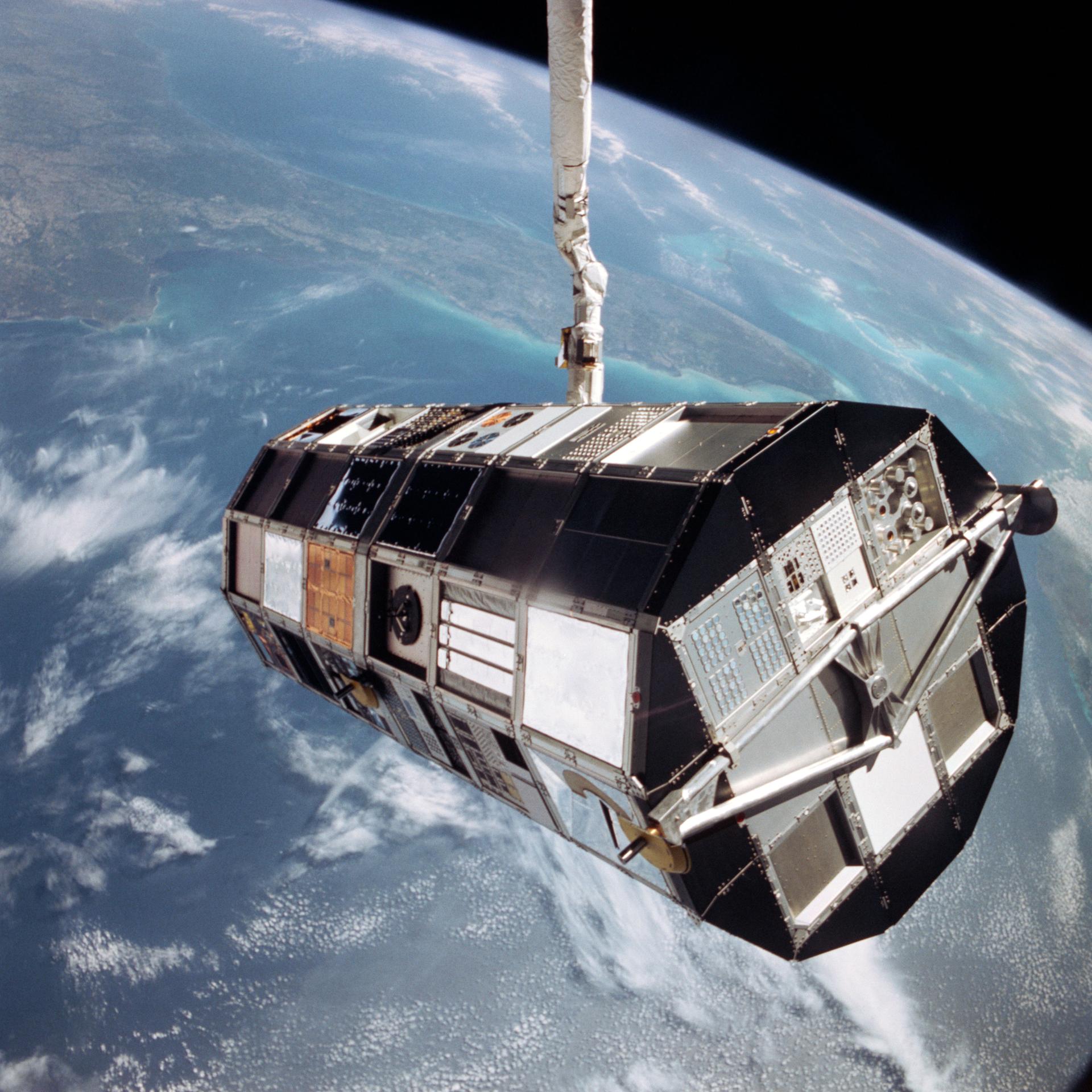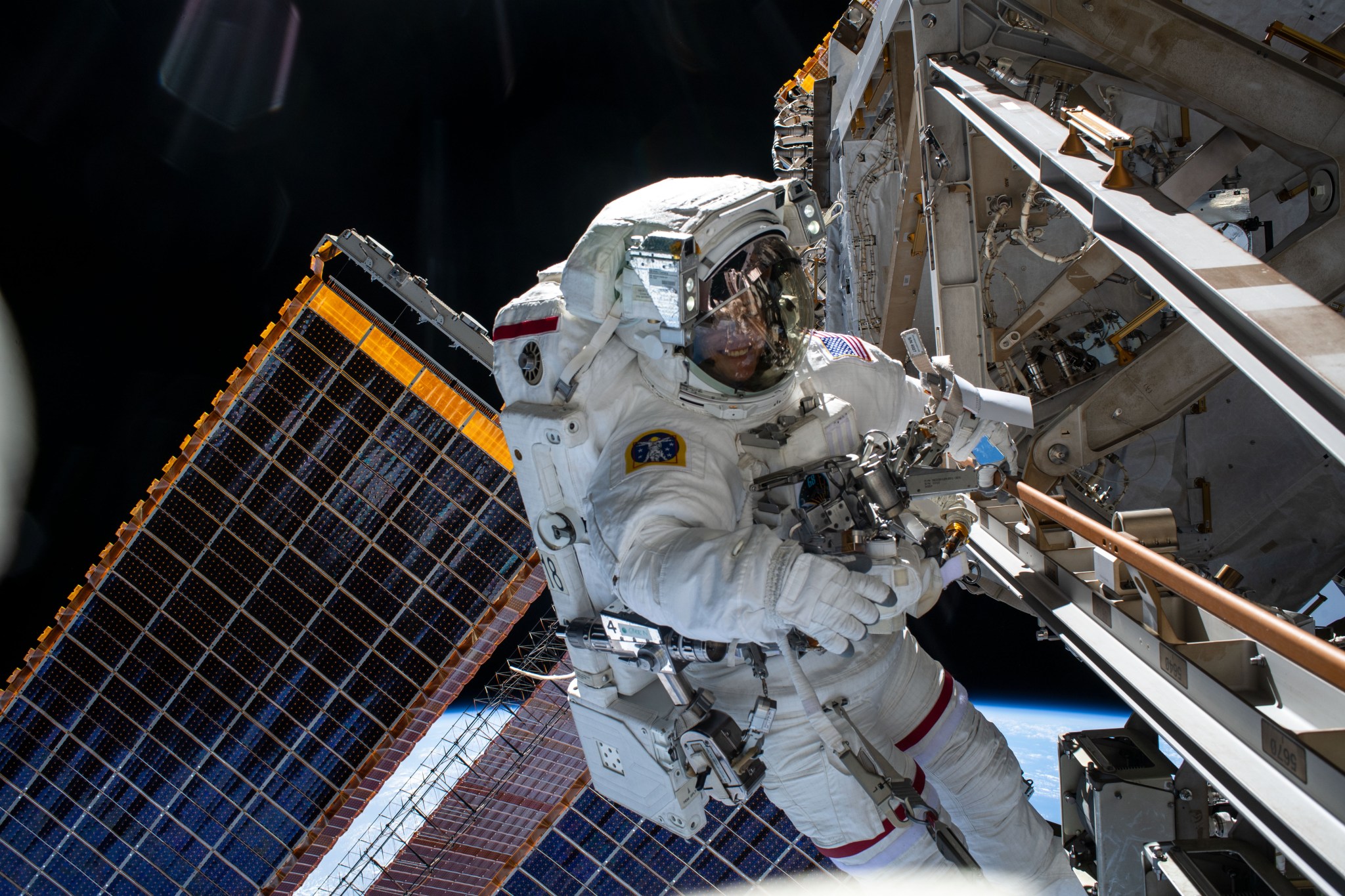This article is for students grades K-4.
Orbital debris (duh-bree) is “junk” in space. It is pieces of spacecraft. Humans have been launching objects into space for more than 50 years.
Most of the “junk” has fallen back toward Earth. About once a day, something falls back to Earth. Some of these objects have landed on Earth. Since most of Earth’s surface is water, objects usually fall there. Other objects burn up in the atmosphere. But many of the objects are still in orbit around Earth.
How Big Is Orbital Debris?
Debris can be as small as tiny flecks of paint from a spacecraft. Large debris could be satellites that are no longer working. A lot of orbital debris comes from explosions of objects in orbit. These are often parts of rockets.
Why Is Orbital Debris Important?
Most “space junk” is moving very fast. It can reach speeds of 4.3 to 5 miles per second. Five miles per second is about 18,000 miles per hour. That’s almost seven times faster than a bullet. Since it is moving so quickly, a tiny piece of orbital debris can cause a lot of damage. A piece of debris the size of a marble could hit as hard as a bowling ball going 300 miles per hour.
How Much Debris Is in Orbit?
Scientists keep track of the debris in orbit. They sort it by size. They have found about 13,000 objects bigger than a softball. Scientists believe there are more than 100,000 pieces of orbital debris bigger than a penny. Tens of millions of pieces are smaller than that. Scientists track all debris larger than a softball using radar and telescopes.
To figure out how many pieces of very small debris are in orbit, scientists studied the space shuttle. They looked for small dents. When the shuttle returned from space, scientists counted how many things hit it. This helped them figure out how many tiny objects are in orbit.
NASA has other ways to learn more about orbital debris. Satellites are brought back to Earth. Scientists then count the number of objects that hit the satellite. One of these satellites was the Long Duration Exposure Facility. It was left in space for over five years. NASA used it to learn about what space does to materials.
How Do Astronauts Stay Safe From Orbital Debris?
NASA knows where larger space debris is. The International Space Station can change its path to stay away from objects that would damage it. Plus, the space station has shields to protect it. The debris hits extra panels instead of important parts. The station can survive impact with small debris.
Spacesuits help protect astronauts from orbital debris. When astronauts go on spacewalks, they wear special suits. The suits include a layer of strong, thin material. This material protects astronauts from impacts. The layer is like a bulletproof vest.
What Is NASA Doing About Orbital Debris?
Will Earth orbit turn into a junkyard? Space agencies around the world work to make sure that does not happen.
The United States has rules about orbital debris. The rules try to cut down on new debris. NASA even has an Orbital Debris Program Office at Johnson Space Center in Houston, Texas. The office looks for ways to create less orbital debris. It looks for ways to get rid of debris that is already in space.
More About Orbital Debris
What Is a Spacesuit?
Video: Space Debris in Motion
What Was the Space Shuttle?





























